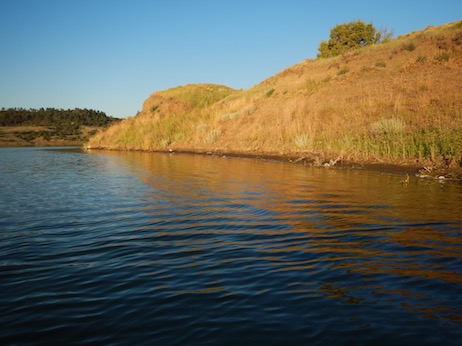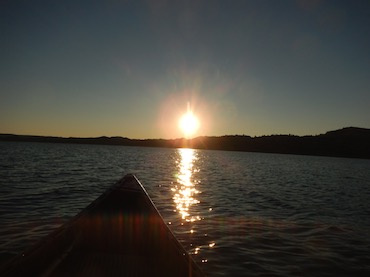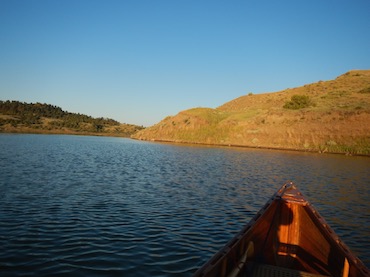A day of rest
19/07/15 09:49

As we travel around, we often have conversations about the names of places. The Idaho Historical Society has published a book that has the contents of all of the roadside historical markers so that we can read them as we drive along without having to stop at each place. Of course roadside historical markers don’t give you much information about the names of places, so there is quite a bit left to speculation and perhaps a little more research.
Indigenous names are often obvious because of our inability to pronounce them and the way in which language shifts with location. When driving in the Pacific Northwest, we enjoy trying to pronounce the various names of passes and creeks and towns.
Some place names obviously have a story attached to them, though we often do not know the story. Otter Creek may have once been a place with plenty of otters fishing and playing. Wolf Creek may have been where someone sighted a pack of wolves or a lone wolf. Cottonwood Creek’s name is pretty obvious. Two Mile Creek, Dead Horse Creek and Froze to Death Creek also have stories that are easy to imagine.
Other place names come from the people who traveled by or make their homes in the area. McDonald Creek might be near the homestead of someone from Scotland.
Throughout the west there are hundreds of places with religious references, often negative ones. Devil’s Lake and Devil’s Tower probably got their English names from a misunderstanding of Lakota religious principles. When the Lakota spoke of spirits, the Christian settlers didn’t know what they meant and supposed them to be pagan and therefore of the devil. The fact that there was no personified evil spirit in Lakota religion didn’t stop the names from sticking to the places.
Other names, however, probably come from the difficulties of travel and the hardships experienced by the early explorers who came to this country. Hell Roaring Divide probably refers to the loud crashing of the water as the creek descends in a nearly vertical fall from the top of the peaks.
I do not know the history of Hell Creek State Park in Montana where we are camped on this lovely Sunday Morning. It is a very rare thing for us to not be in town and at a church on a Sunday morning, but the specific shape of this trip has landed us at this lovely campsite along the shore of the Fort Peck Reservoir at the end of 25 miles of gravel road north of Jordan, Montana. The town Jordan may be named for the famous river important to so many biblical stories, but there is no similar river to mark the townsite. In fact there is a dry gulch called Big Dry Creek right in town.

It is also possible that some of the creeks in the area weren’t very good drinking water. The hills show plenty of alkali and the heavy mineral concentration might make for poor drinking.
The bottom line is that I don’t know why this place is called Hell Creek State Park. There doesn’t seem to be much information on the state parks website or here at the campground. For us on this visit there are no associations with the negative other than the distance from our community. We don’t have any family who live near here and we are here on a vacation day - a day away from our church community. We always miss the church when we are away and are looking forward to being back at work and in the midst of the community on Tuesday.
While we are here, we are very aware of the beauty of this place. There are meadowlarks, seagulls, geese and other birds in great abundance. The park is adjacent to the Charles M. Russell National Wildlife Refuge, a place abundant in white tailed deer and thousand and thousands of birds. Located on the national flyway, it is host to many birds during the spring and fall migrations and is a place were dedicated bird watchers come to add species to their lists.
We are here in part to explore new territory for us. Because we drive back and forth from Rapid City to our family sites in Montana frequently, and we also lived in North Dakota for seven years, driving back and forth to our home places. This trip doesn’t involve very much new road for us. We’ve been to Jordan before on our way to and from various events and excursions. But we have never taken the time to drive the gravel roads to the shores of Fort Peck Reservoir. The way this trip turned out offered us a couple of days to stop and play in the water.

So this will be our sabbath for today. To pay special attention to God’s creation. To rest and give thanks for the many blessings of this life. And, just a little, to miss the community of people who are worshiping as I write this blog.
God is good all the time. All the time God is good.